30-second summary:
Following pandemic-driven shopping trends, lots of local businesses had to explore online marketing opportunitiesGoogle offers a few great ways for a local business to get found through organic searchLocal 3 Pack is Google’s search element containing top three local businesses based on your search query.To rank in the Local 3 Pack you need to ensure your Google My Business listing is complete and activeThird-party local business listings (like Yelp and Tripadvisor) may also drive some organic search visibility so it is a good idea to claim your business thereHyperlocal content may help your business discovered by people who were not even searching to buy a local product or service, so produce relevant content on a regular basis
Local marketing has become even a more trending topic, following the pandemic-driven pandemic.
Lots of local businesses that used to rely on local foot traffic were forced to turn to the Internet to get found by customers.
That digital transformation brought this huge challenge to just about any local business – how to get found online.
Step 1: Claim your business profile on Google My Business
Google offers huge organic search visibility to local businesses through the so-called Local 3 Pack that shows up on top of organic results when search intent reflects buying (or doing) something locally.
Local 3 pack is Google’s search element that includes three relevant businesses from Google Maps results:

Image source: Screenshot by the author
Ranking your business in the Local 3 Pack is no easy task. It heavily relies on proximity of those businesses to the customer’s current location.
However, there are a few things you can do to improve your local rankings:
Make sure you have a detailed (and original) description of your business and what it is you do.Add your website (oftentimes Google would grab text from the associated website and rank a business based on that content). There are also a few great plugins allowing you to embed your local listing onto your website for better visibility.Upload pictures and videos of your office and teamAdd your products and services (Note: Services are not believed to have a huge (or any) impact on your local rankings but why not add those anyway)Your business categories. Keep those categories as relevant as you can as they can harm your local rankings
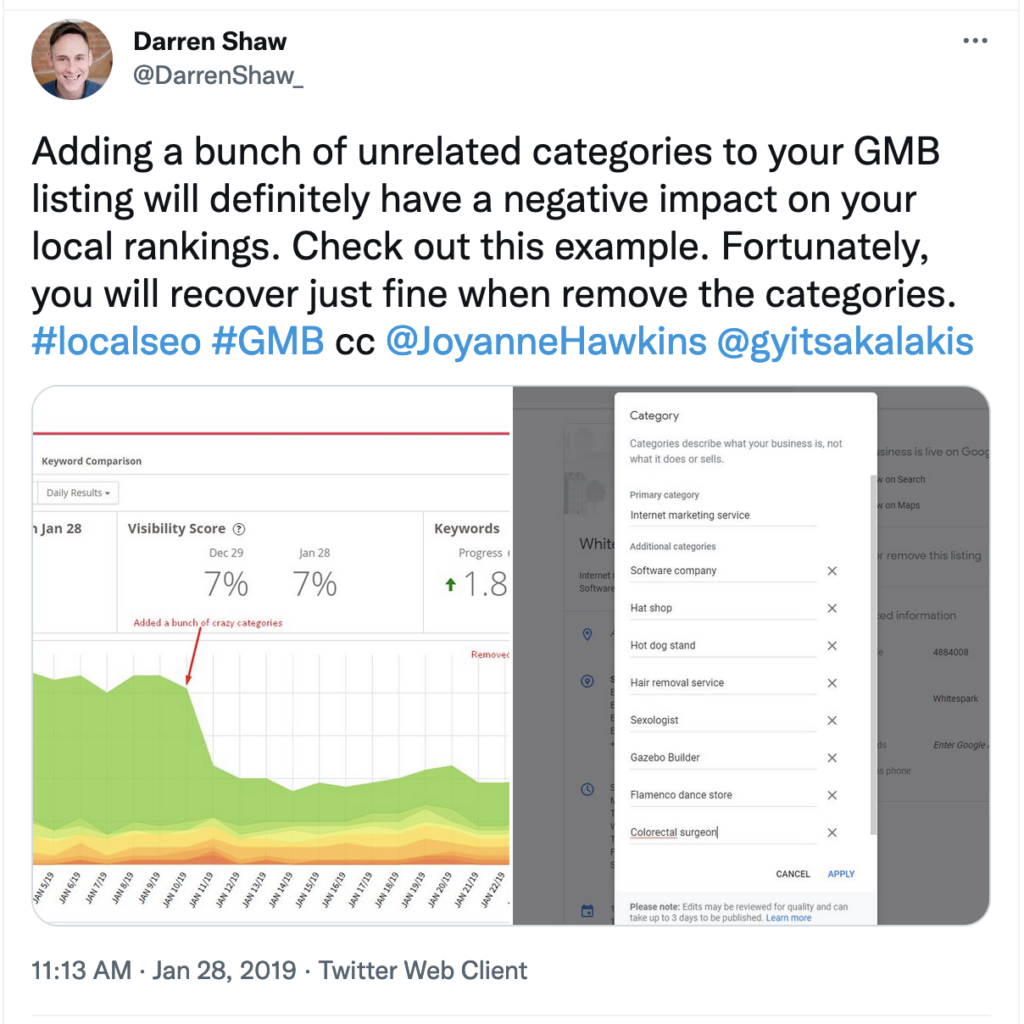
Image source: Screenshot by the author
Most importantly: Keep an eye on your Google’s reviews
Business reviews are known to be crucial for your local (and hence Local 3 Pack) rankings, so make sure to keep an eye on your reviews and reply to all of them.
Note that Google may remove your review if they find you have been using manipulative or misleading tactics when getting those reviews, for example:
If that review is repeated across other business profiles on other sites (which, by the way, can be quite natural… I’ll be the one to admit that I may leave my favorite business the same review on a few platforms I am registered at. But again, I think we are talking about suspicious patterns here rather than one-on-one cases)If you had a massive influx of reviews overnightIf Google suspects that you and your team are reviewing your business pretending to be clients.
While you may notice your competitors implement these manipulative tactics without no obviously negative impact on their rankings, I’d still suggest avoiding these at all costs.
You can invite your customers to review your business on Google through ashort URL that’s specific to your local business (and even note that on your business card). But you are not allowed to request positive (five-star) reviews or segment your customer base to only invite happy customers to review you.
If you have a budget, investing in ads on Google maps is also a great idea. This could bring in more customers and reviews.
Step 2: Claim your business profile everywhere else
While claiming your business is generally a good idea to get better control over your branded content, it also gives you additional organic exposure because those listings may rank in organic search results and bring additional exposure.
Hence, your next step is identifying important local directories (like Trip Advisor and Yelp)and claiming your business everywhere.
Here’s a huge list of those you can consider.
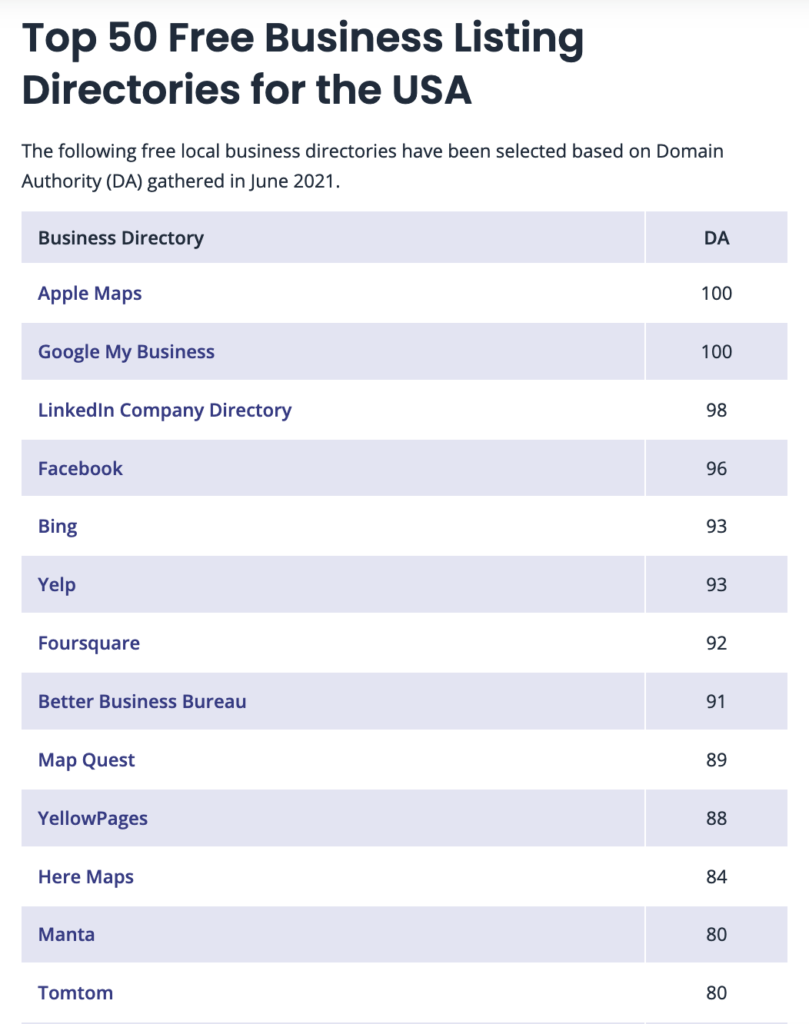
Image source: The Ultimate Free Business Directory List for the USA – Updated 2020
Just about any local business out there will need to ensure a strong Yelp presence, for example, so that one will always be on top of your list. Yelp marketing is tricky but if you start getting reviews there, there’s a way to display those reviews on your site to boost your conversions.
When putting your business on maps…
Make sure your business name and address is consistent across all channels, including the phone number formatComplete all available fields and use all available characters! More content generally means higher rankings for your listings!Monitor your listings for reviews, add updates, ensure your info is up-to-date!
Step 3: Develop a hyperlocal content strategy
Similar to how foot traffic works for a local business (passers-by may check a store out of curiosity), a well-planned content marketing strategy can drive customers who never intended to buy anything or didn’t know they needed you.
Describe (location-driven) problems your business solves. For instance, a Seattle hairdresser publishes an article on haircuts that work well in the windy or rainy climate.Address some problems that are common in your area. These work best when they are timed to a particular seasonal trend. For instance, a bakery in Albany publishes a checklist of foods to store at home to prepare for a snowstorm.
Here are a few ideas for hyperlocal content:
Ideas for local vacations and where your business can be of helpLocal events and how your brand participatesLocal partnerships like local charities
Take note of local People Also Ask results because those are great sources of hyperlocal content.
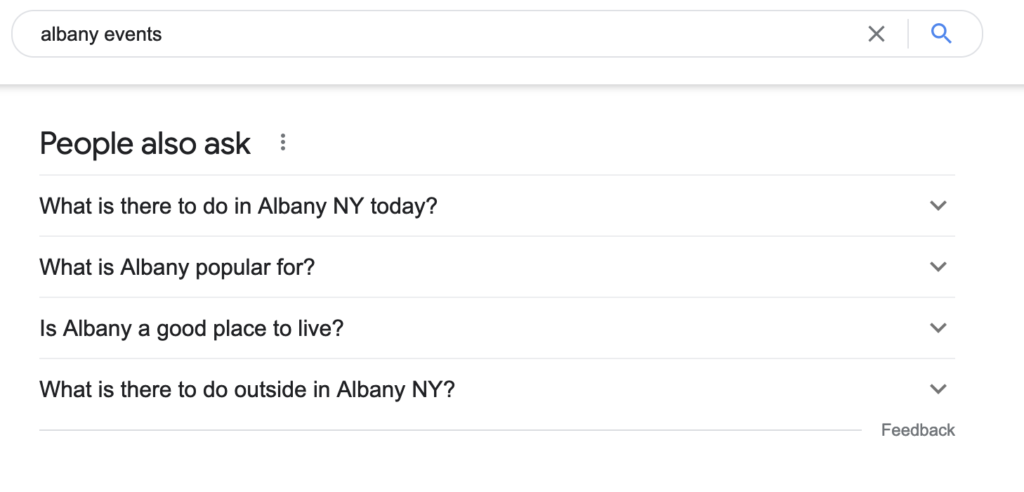
Image source: Screenshot by the author
Generally, answering local questions is a great idea!
Let’s take a look at this search query: “how far is Central Park from Times Square
People searching for this may not necessarily be looking to buy anything but there are still some opportunities here as your content may give them ideas on where to dine or stay.
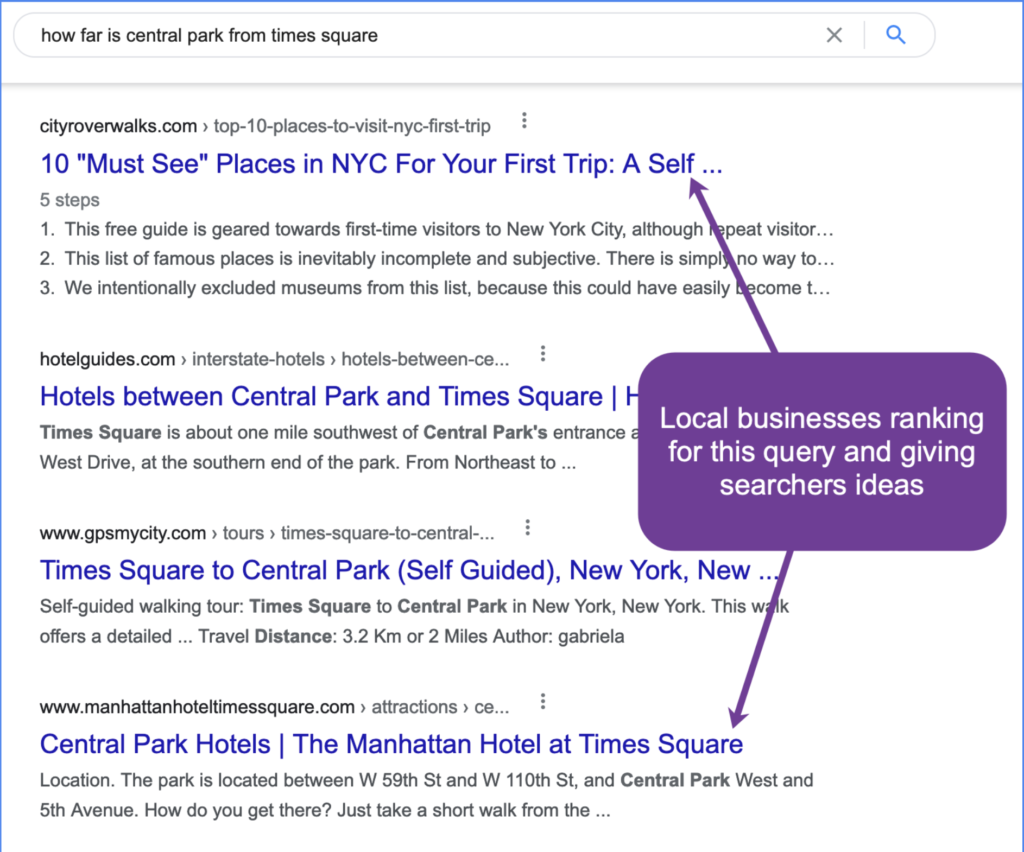
Image source: Screenshot by the author
The beauty of hyperlocal content marketing is that your clients don’t have to be in the area to find your content: They may be planning a trip to your area and discover your business prior to going. This is something local maps placement won’t be able to help with.
Using semantic search is another good way to come up with hyperlocal content ideas because it will help you identify location-based keywords that are able to generate organic traffic. Here’s how semantic search works:
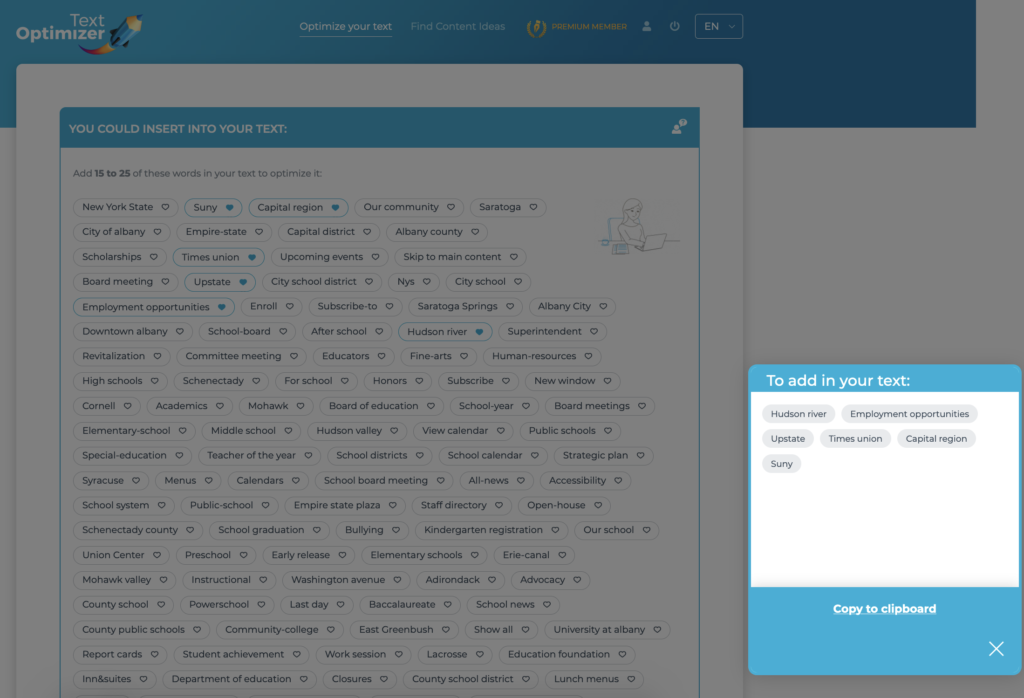
Image source: Screenshot by the author
Conclusion
Organic search provides quite a few opportunities for local businesses to generate traffic and get found by customers. Keep an eye on your local listings and keep creating hyperlocal content to generate relevant traffic for your local business. Good luck!
Ann Smarty is the Founder of Viral Content Bee, Brand and Community manager at Internet Marketing Ninjas. She can be found on Twitter @seosmarty.
Subscribe to the Search Engine Watch newsletter for insights on SEO, the search landscape, search marketing, digital marketing, leadership, podcasts, and more.
Join the conversation with us on LinkedIn and Twitter.
The post Three organic search opportunities for your local business appeared first on Search Engine Watch.


